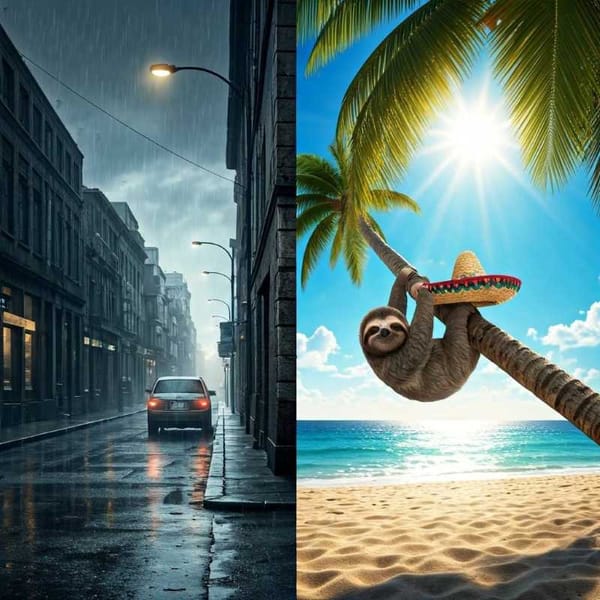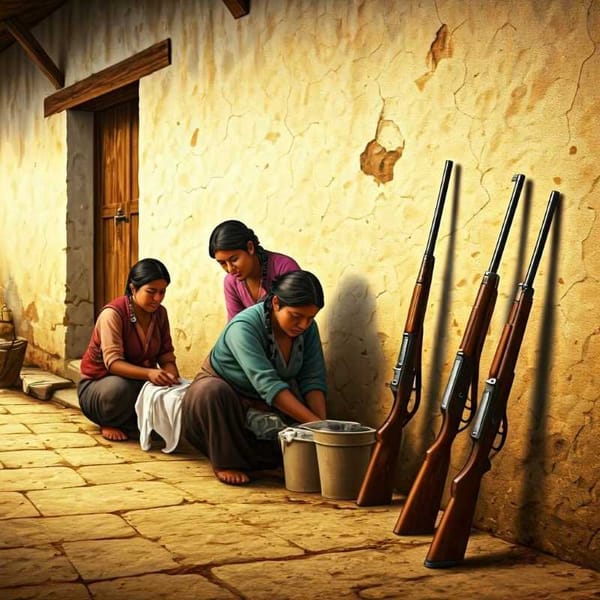Albert Camus. A foreigner in Buenos Aires
The Mariano Moreno National Library pays homage to the French writer, whose literary and philosophical humanist work influenced the intellectual field of the 1950s and 1960s in Argentina.

"The corridor that surrounds my house is like the deck of a ship, a ship that sails in all the greens of the earth. I came and went along that deck dictating. José Bianco was typing. It was summer. I had just read - enthusiastically discovered - Caligula, the work of an unknown. But I already seemed to know him and was translating him. That's how I met Albert Camus in Mar del Plata, where he would never have time to arrive, physically", Victoria Ocampo once recalled, about her first impressions of the French writer, during the summer of 1946. However, they met several times that same year, in New York, before their fleeting visit to Argentina.
Although Camus never expressed in his travel diary those meetings with the editor of Sur magazine, neither his great biographer, Olivier Todd, dedicated some lines about his visit to Villa Ocampo: the mansion in San Isidro where Victoria offered him lodging. Nevertheless, both forged a friendship that is well exposed in the correspondence they maintained between 1946 and 1959.
The writer
Winner of the Nobel Prize for Literature in 1957, Camus was one of the most celebrated French writers of the 20th century. Of Algerian origin, he was born on November 7, 1913. Works such as The Stranger (1942), The Misunderstanding (1944), The Plague (1947), and essayistic and non-fiction texts, such as Weddings (1938) and The Myth of Sisyphus (1942), in which he puts forward his absurdist philosophy, made him one of the most outstanding literary references.
The absurd was one of the great themes addressed by the author. It is the struggle between the search for meaning that human life can have and the non-existence of that same meaning. Camus insists, despite the death sentence that weighs on every person, on the type of attitude adopted: to face such condition and strengthen ourselves from the experience, and not to abandon ourselves in the apparent meaninglessness.
Novelist, playwright, journalist, and philosopher, his role as a committed writer was more than a way of life. According to specialists at the Mariano Moreno National Library,
"His work in the press both in Algeria and in France -during the Nazi occupation- showed a full and permanent political commitment. However, he was an uncomfortable left-wing intellectual: amid the Cold War, he questioned and denounced the crimes of Stalinism and reflected negatively on the revolutions and the communist ideology in El hombre Rebelde ("The Rebel Man", 1951). In this way, he polemicized with Sartre and with a large part of the French intellectual arc".
Camus had been a great friend of the French philosopher Jean-Paul Sartre, father of existentialism, but he became estranged due to deep ideological and intellectual issues. Although he suffered from tuberculosis almost all his life, he died at the age of 46 in an automobile accident, in the town of Villeblevin in Burgundy (France).
Paris - Buenos Aires
On August 12, 1949, sent by the French Ministry of Foreign Affairs for diplomatic matters, Albert Camus arrived in Buenos Aires. At that time, he was already a renowned writer and philosopher in France. He planned to give a series of lectures in Argentina, taking advantage of the visit, but in June 1949, the performance of his play, The Misunderstanding, had been censored. Camus left the country, without giving any of the scheduled lectures. Nevertheless, Victoria Ocampo and her editorial team continued with the dissemination of his literary production. She was one of his translators, as well as Julio Cortázar and Aurora Bernárdez.
The exhibition
One of the gems on display at the exhibition at the Mariano Moreno National Library is the manuscript of the first version of The Plague, written between 1942 and 1944. It is a page from the novel - on loan from the National Library of France - in which Camus recounts the adventures of the protagonists when the city is hit by a plague and the catastrophes it entails. From there, it is exposed how men and women face the idea of the absurd, about life, death, the meanings they try to find in a universe that responds in another way. There Camus develops part of his absurdist thought.
Other handwritten pages are also exhibited, belonging to Weddings (1938), The Just (1950) The Fall (1956), The Myth of Sisyphus (1942), and articles from Summer (1954), such as "Return to Tipasa", written in 1947. Through these, one can observe word choices, changes of ideas, additions, and omissions that, perhaps, enlarge and illuminate the world of the writer in his creative process.
On the other hand, different photographs are exhibited: from Camus' childhood to the most emblematic meetings of his intellectual circle. Among them is the only photo that exists of his visit to South America, in which he is seen posing in front of Christ the Redeemer in the Brazilian city of Rio de Janeiro. Also, the one when the writer was 24 years old, in 1937, and was playing the role of Olivier le Daim for the play Gringoire, by Théodore Banville, with the Radio Alger company.
Other pieces on display are editorial letters and translation contracts on some of his works. They show the publishing interests not only of the author, but also of the emblematic French publishing house Gallimard, and other major Argentinean publishers such as Emecé and Sudamericana. In one of them, there is a request for compensation from Sur to Aguilar for the publication of Camus' complete works, whose rights still belonged to Victoria Ocampo's publishing house.
About the translations, Camus' dedication to reviewing each one of them should be highlighted. The author had a very good command of Spanish and would never authorize the translation of any of his books (or the performance of his plays) until he had personally reviewed them. Books, dedicated copies, videos, magazines, adaptations, and reviews of the writer complete this exhibition, curated by Tomás Schuliaquer, a member of the research team of the Mariano Moreno National Library.
Albert Camus in brief
Albert Camus, Frenchman born in Algeria, essayist, journalist, novelist, genius. He came into the world almost one hundred years ago in the bosom of a family of French colonists. He began his studies of philosophy at the University of Algiers, but he couldn't graduate because he fell ill with tuberculosis. He dedicated a short period of his life to theater and journalism. After working for a newspaper in the Algerian capital, he published Weddings, and in Paris, he was editor of the newspaper Paris-Soir.
In 1942 he published The Foreigner and The Myth of Sisyphus -short novel and essay respectively- with which he began his literary strength among the voices of readers and critics. After being influenced by existentialism, more alive than ever in French lands, he wrote his first plays: Caligula and The Misunderstanding. The change in his thinking is perhaps reflected in The Plague more than in any other work.
Camus is also the author of The Fall, The Kingdom, The Plague, and a few other plays devoted to reality and man's conscience, as well as war and the times themselves. Camus lived few, but profitable years, at least in the artistic sense. He won the Nobel Prize for Literature in 1957, a prize rejected seven years later by his compatriot, colleague, and rival Jean-Paul Sartre, who made it clear that he was not rejecting the Prize because of Camus. In the end, it mattered little whether Camus' vision was sterile or ineffective - as Sartre thought - or whether he was immoral or a communist.
On November 4, 1960, Albert Camus died in a car accident, forgetting forever so many conflicts. Forgetting him, but without forgetting us.




